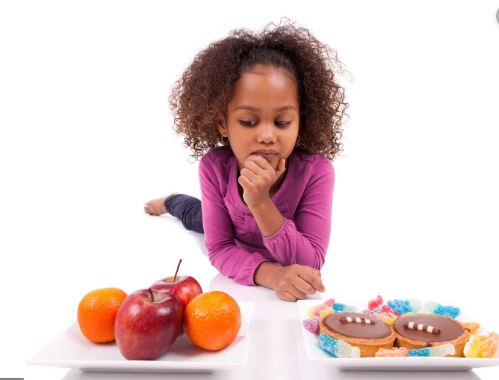The ketogenic or keto diet is a very-low-carb high-fat diet. It seems to have delivered several health benefits over the years. But is keto safe for kids?
And is it a solution for parents who are trying to help overweight children lose pounds and get healthy?
In recent years, experts used the keto diet to help manage certain health conditions in children. This increasingly includes epilepsy and brain cancer. While the keto diet is relatively safe for adults, this may not be the case for children and teens. Not unless it’s prescribed by a health professional and for medical reasons.
Is keto safe for kids? This article reviews the safety of the keto diet for children and teens, as well as its potential uses and downsides.
What is the keto diet and is keto safe for kids?
The ketogenic diet was initially created around 1920; as a treatment for epilepsy under medical supervision. More recently, keto has become a popular diet for weight loss. It is a high-fat, very low-carb diet, which also includes moderate amounts of protein.
People following this fad diet typically eat foods higher in fat and do not restrict protein foods. Examples of common keto foods include butter, oil, avocado, heavy whipping cream; high-fat cheese, bacon, sausage and fatty fish, such as salmon. Nuts, eggs, leafy greens, and other colourful vegetables are also part of a keto diet.
The keto diet includes reduced amounts of grains, bread, rice and pasta, fruits, sweets or juice.
This high-fat, low-carb diet aims to put the body into a state of ketosis. Normally, the carbohydrates you eat break down into a sugar called glucose – which your body uses as energy. But when you restrict carbohydrates, the body doesn’t produce as much glucose. When this happens, the body turns to fat as an energy source and produces a substance called ketone bodies. When there are high amounts of ketone bodies in the blood, the body is in ketosis.
The body basically thinks it’s in starvation mode, so it switches to fat as a back-up energy source. And that’s part of the reason there is weight loss.
Why the keto diet is not recommended for children and teens
Experts don’t recommend the keto diet for weight loss in children because it seriously limits carbohydrates. And children need carbs to be mentally and physically active. Children on a healthy, well-balanced diet should typically eat about 130 grams of carbohydrates a day. That’s approximately 45-65% of their calories; whereas the keto diet limits carbohydrates to approximately 20-30 grams a day.
Foods high in a carbohydrate called fiber help promote feeling full and aid in weight control or weight loss. Fiber found in vegetables, fruits, and whole grains help maintain steady blood sugars and prevent constipation as well.
Carbohydrates provide us with energy and important nutrients. Children need carbohydrates for growth and development, to do homework, to read books and to go outside and play.
Side effects of keto diet for children
When the body goes through ketosis, children (and adults) might feel some initial side effects, including:
- Constipation
- Diarrhoea
- Fatigue
- Irritability
- Nausea
- Vomiting
The side effects happen because the body literally thinks it’s starving. Additionally, the keto diet may affect focus and concentration; cause nutritional deficiencies; and can lead to high levels of cholesterol and triglycerides, weak bones and kidney stones.
Healthy weight loss options instead of keto for kids
For children and teens who need to achieve a healthy weight, experts recommend establishing healthy habits over specific fad diets. They recommend seven tips:
- Eat a healthy, well-balanced diet
To provide children with a wide variety of nutritious foods, serve a balanced diet plate. If you make a plate like that at every meal, you’re doing a great job. Whether a child’s weight is high or low, at least you know you’re providing all the nutrients your child needs to grow and thrive.
- Limit processed foods and foods with added sugar
These foods include soda, sweetened drinks, cookies, candy, chips, desserts, and baked goods
- Choose nutritious snacks
Make sure kids are snacking only when truly hungry, and choose healthy options. Encourage small portions that incorporate one or two food groups. For example, try half a peanut butter sandwich on whole-grain bread; sliced veggies with hummus or bean dip, or unsweetened yoghurt with fruit.
- Stay positive and give your child the facts
Explain to your child that it’s most important to eat the right foods to support healthy growth and maintain energy throughout the day. For example, tell them, “You want to eat fruits and vegetables because they help you concentrate at school, give you the energy to play and make you feel better overall.”
- Don’t focus on the number on the scale
“Children come in all shapes and sizes. What’s important is how our body functions, how we feel and how healthy a child is.
- Offer new foods repeatedly
Even if a child didn’t like certain nutritious foods a year ago, offer them again. Children’s tastes change as they grow.
- Encourage children to pick an activity they love
Walk, run, ride a bike. If your child likes video games, download a game that requires them to be active. Find a favourite sport. Turn on music and dance. If they enjoy the movement, go for it.
This article was first published on AfricaParent.com
Copyright 2025 TheCable. All rights reserved. This material, and other digital content on this website, may not be reproduced, published, broadcast, rewritten or redistributed in whole or in part without prior express written permission from TheCable.
Follow us on twitter @Thecablestyle

